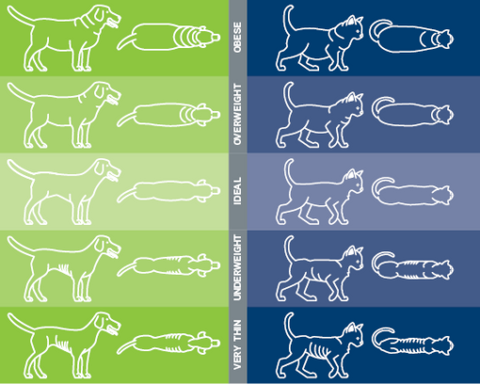How to Keep Your Dog Happy & Healthy

When we accept the responsibility of bringing a dog into the family, we’re committing to providing them a safe shelter and also keeping them as happy and healthy as possible. While routine trips to the vet will keep your pet healthier and disease-free, here are some great things that you can implement at home to keep your dog in top health.
Keep Your Pet at a Healthy Weight
To keep your pet’s weight in check, make sure that you are feeding them a healthy, nutritious diet and making exercise a part of their daily routine. When pets are overweight, it could actually reduce their life expectancy by two years. Even a slight weight loss for an overweight pet can make a big difference in their overall health. Additionally, maintaining a healthy weight for your pet will reduce chronic illness such as kidney disease, heart disease, or even cancer. It will also lessen the risk factor of diabetes, and alleviate joint pain associated with arthritis.
Here’s a great infographic from the AVMA to determine what a healthy weight looks like for your pet:

Keep Your Pet Free from Parasites
A parasite is defined as “an organism that lives in or on another organism (its host) and benefits by deriving nutrients at the host’s expense.” In dogs, common parasites include heart worms, fleas, mites, and ticks. Your veterinarian can advise you on which treatment will be the most effective for your pet.
If you’re looking for a natural remedy to prevent fleas and ticks try this recipe for natural flea & tick repellant made with:
- 8 oz of Apple Cider Vinegar
- 4 oz of warm water
- 1/2 teaspoon of salt
- 1/2 teaspoon of baking soda
Keep Your Dog Hydrated
Dogs should always have access to a constant supply of water. Especially in extreme hold or cold, it is important to make sure that your dog is not exhibiting symptoms of dehydration, which may include sunken eyes, dry gums, lethargy, loss of skin elasticity, weakness or collapsing. Water should be changed every day, and the bowl should properly cleaned and sterilized once a week to prevent growth of bacteria.
Check and Clean Your Dog’s Ears
Dog are extremely prone to ear infections and ears also provide a warm spot to hide for the parasites mentioned earlier. Check your dog’s ears regularly (once a week), and daily for dogs that have floppy ears. An easy way to clean your dogs ears are by using equal parts vinegar and rubbing alcohol on a cotton ball or swab. Strong smells, excessive scratching or irritation or discharge are all signs of an ear infection, and should be treated by a medical professional.
Keep Those Teeth Brushed!
Pros recommend that dog’s teeth are brushed everyday to get rid of plaque and built up bacteria. This will also help reduce “doggy breath” and give you a good opportunity to examine the mouth and make sure everything is looking good (no loose teeth, sores, or bleeding). Use a toothpaste made especially for dogs or you can make this DIY Toothpaste for Dogs using:
- 2 Tablespoons Baking Soda
- 2 Tablespoons Coconut Oil
- 2 Drops Peppermint Essential Oil
By following these easy at-home tips like these and taking your dog to the vet regularly, your pet will be happy and healthy for a long time to come!



